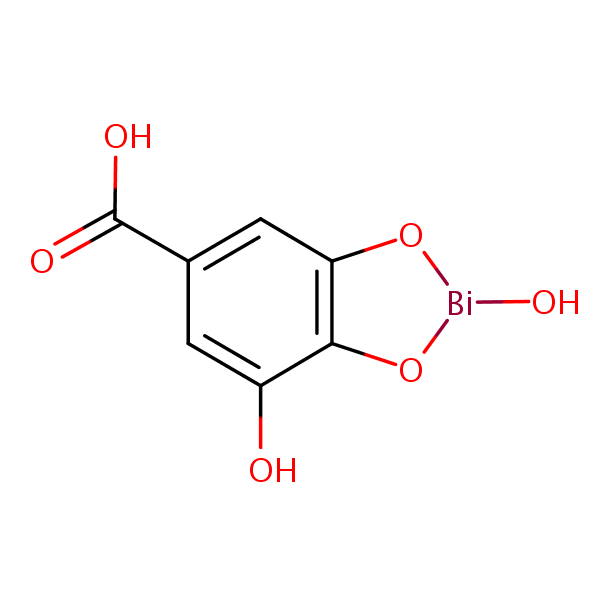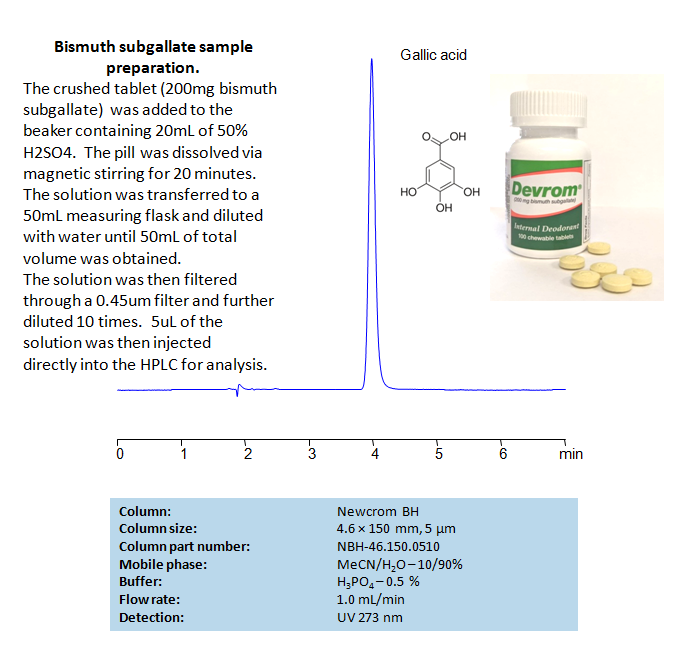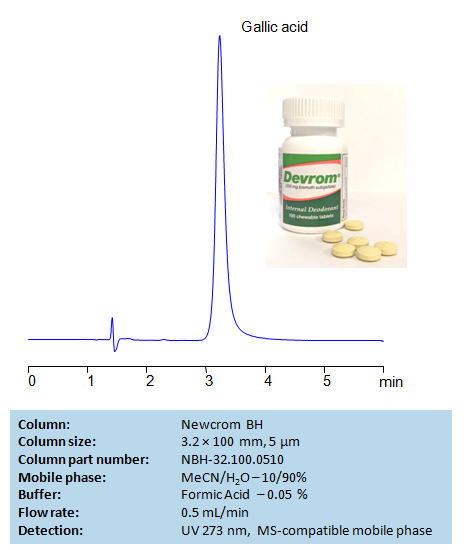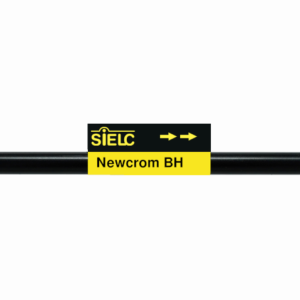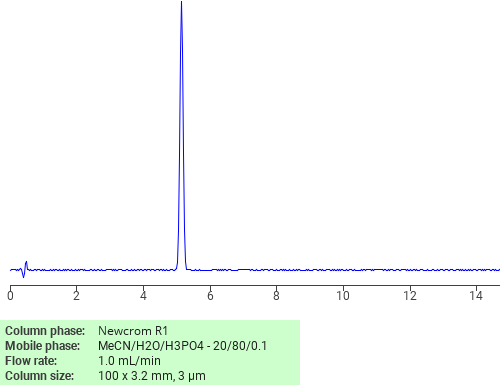| CAS Number | 99-26-3 |
|---|---|
| Molecular Formula | C7H5BiO6 |
| Molecular Weight | 394.092 |
| InChI Key | JAONZGLTYYUPCT-UHFFFAOYSA-K |
| LogP | 0.81 |
| Synonyms |
|
Applications:
HPLC Method for Analysis of Gallic Acid in Bismuth Subgallate Tablets (Devrom) on Alltesta™
May 5, 2022
Separation type: Liquid Chromatography Mixed-mode
MS-compatible mobile phase
High Performance Liquid Chromatography (HPLC) Method for Analysis of of Gallic Acid in Bismuth Subgallate Tablets
Gallic acid is a naturally-occuring phenolic acid that was a key ingredient in European iron gall ink from its first discovery in the 12th century until the 19th century. In modern times, it’s heavy metal salt, Bismuth subgallate, known by its trade name Devrom, is known for its effects at deodorizing flatulence and stools. Gallic acid, extracted from Devrom tablets, can be retained and analyzed on a mixed-mode Newcrom BH column with a mobile phase consisting of water, Acetonitrile (MeCN), and Phosphoric acid (H3PO4). This analytical method can be UV detected at 200 nm with high resolution and peak symmetry.
| Column | Newcrom BH, 4.6×150 mm, 100A |
| Mobile Phase | MeCN – 10% |
| Buffer | H3PO4 – 0.5% |
| Flow Rate | 1.0 ml/min |
| Detection | UV 273nm |
| Column | Newcrom BH, 3.2×100 mm, 100A |
| Mobile Phase | MeCN – 10% |
| Buffer | Formic acid – 0.05% |
| Flow Rate | 1.0 ml/min |
| Detection | UV 273nm |
| Class of Compounds | Acid, Hydrophilic |
| Analyzing Compounds | Gallic Acid |
Application Column
Newcrom BH
The Newcrom columns are a family of reverse-phase-based columns. Newcrom A, AH, B, and BH are all mixed-mode columns with either positive or negative ion-pairing groups attached to either short (25 Å) or long (100 Å) ligand chains. Newcrom R1 is a special reverse-phase column with low silanol activity.
Select optionsGallic acid

Separation of Bismuth subgallate on Newcrom R1 HPLC column
February 16, 2018
Bismuth subgallate can be analyzed by this reverse phase (RP) HPLC method with simple conditions. The mobile phase contains an acetonitrile (MeCN), water, and phosphoric acid. For Mass-Spec (MS) compatible applications the phosphoric acid needs to be replaced with formic acid. Smaller 3 µm particles columns available for fast UPLC applications. This liquid chromatography method is scalable and can be used for isolation impurities in preparative separation. It also suitable for pharmacokinetics.
Application Column
Newcrom R1
The Newcrom columns are a family of reverse-phase-based columns. Newcrom A, AH, B, and BH are all mixed-mode columns with either positive or negative ion-pairing groups attached to either short (25 Å) or long (100 Å) ligand chains. Newcrom R1 is a special reverse-phase column with low silanol activity.
Select options